Preserving German-Jewish Culture

(Dr. William H. Weitzer, Executive Director of the Leo Baeck Institute)
Leo Baeck was a leading German-Jewish rabbi who, during World War II, turned down offers to be rescued into the United States, as he did not want to leave his fellow European Jews behind. Deported to the Theresienstadt concentration camp, he survived, though all four of his sisters perished.
The Leo Baeck Institute preserves the history of German-speaking Jews.
I am pleased to publish my recent interview with the Leo Baeck Institute’s Executive Director Dr. William H. Weitzer.
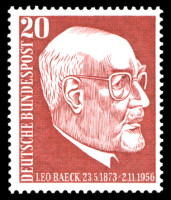
(A 1957 West German postage stamp honoring Rabbi Leo Baeck)
1) Please briefly describe the Leo Baeck Institute’s history and mission.
In 1955, a group of émigré intellectuals including Ernst Simon, Robert Weltsch, Martin Buber, and Gershom Scholem met in Jerusalem to found an institute to preserve the history of the German-Jewish culture that the Nazis had sought to destroy. They named the institute after Rabbi Leo Baeck and appointed him as the first president. Over the succeeding 60 years, the Leo Baeck Institute has built the foremost collection of books, papers, art, and artifacts documenting the history and culture of German-speaking Jews.
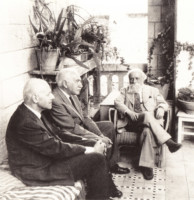
(Martin Buber, Ernst Simon, and Shmuel Hugo Bergman at the founding conference of Leo Baeck Institute, May 30, 1955)
2) How has the Leo Baeck Institute’s work changed in the 21st century?
The mission to preserve German-Jewish culture continues over 60 years later, but circumstances have changed in the 21st century:
(i) Now that our archival collections are fully digitized, they are available to individuals anywhere in the world and not just to the scholars who used them for decades. Therefore, we are examining ways to assist a more diverse audience of users who want to examine our archives.
(ii) Today in Germany, there is a great interest in German-Jewish history among many Germans in addition to the fact that there are now more than 200,000 Jews living in Germany. Accordingly, we are developing programs to bring the story of the German-Jewish Diaspora back to Germany.
(iii) Finally, in both the U.S. and Germany, LBI is creating exhibits and programs that connect German-Jewish history to contemporary life as both countries, and nations all over the world, grapple with issues related to diversity, inclusion, migration, acculturation, and religious freedom.
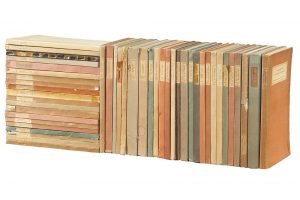
(Bücherei des Schocken Verlags, paperbacks of popular Jewish titles published by department store magnate Salman Schocken during the Nazi era)
3) From which parts of the German-speaking world did your family come?
While most of LBI’s founders came from the generation of German-speaking Jews who left Germany in the first half of the 20th century, all of my grandparents were born in the U.S. It was my maternal great-grandparents who came to the US in the second half of the 19th century from Germany and Austria.
Since the LBI’s focus is not just on the 20th century or the Holocaust, but rather on the centuries of German-Jewish history that preceded it, our collections include the stories of many families like mine who were part of the large wave of migration from Germany to the US in the mid-19th century. Even the materials donated by the 20th century refugees and their descendants include a large amount of papers from the 19th and even 18th centuries. What people saved from Germany was not just their own histories, but also the stories from previous generations.

(In NYC, the Leo Baeck Institute is housed within the Center for Jewish History on 15 West 16th Street)
4) Please tell us why Robert M. Morgenthau was selected for this year’s Leo Baeck Medal.
We are honoring Robert M. Morgenthau for several reasons. Similar to my family’s story, Robert Morgenthau’s great-grandfather and grandfather came to the U.S. in the 1860’s. The Morgenthau family represents an important generation of immigrants who succeeded in America and dedicated themselves to public service. His grandfather, Henry Morgenthau, Sr., was the U.S. Ambassador to the Ottoman Empire when he called attention to the Armenian genocide. His father, Henry Morgenthau, Jr., who served as Secretary of the Treasury during the Great Depression and during WWII, was instrumental in raising President Roosevelt’s awareness of the fate of the Jews in Europe. Above and beyond his family’s history, Robert Morgenthau’s own career in public service and his role in preserving history as founding Chairman of New York City’s Museum of Jewish Heritage are reasons to honor him.
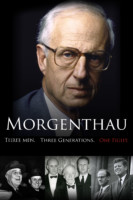
(Ed. — Past recipients of the Leo Baeck Medal include Dr. Ruth Westheimer, Daniel Libeskind, Maestro Kurt Masur and artist Anselm Kiefer; the complete list of past recipients is here).
5) What role do exhibitions play in the Leo Baeck Institute’s work?
Over the past two years, LBI has expanded our effort to tell the story of German-Jewish history through exhibits in the U.S., Germany and online. Each exhibition tells a specific story, but they all fit the overall narrative of how German-speaking Jews have played a critical role in the history of Germany and beyond. In March, we opened Stolen Heart: The Theft of Jewish Property in Berlin’s Historic Center, 1933-1945, our most ambitious exhibition ever. It depicts the theft of Jewish-owned properties in the center of Berlin in the 1930s by following the stories of five families, their businesses, and their residences. We currently have a travelling exhibition in Germany called Deutsch und Jüdisch that tells the story of German Jewry through four displayed objects with accompanying panels and a brochure. In 2017, we will open an exhibit on German Roots of Zionism at the Leo Baeck Institute in New York.
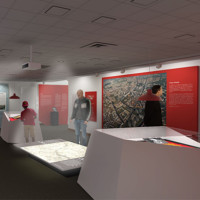
(View of the Stolen Heart exhibit, which runs through 2016 at the Leo Baeck Institute)
6) Which public programs does the Leo Baeck Institute have scheduled for the upcoming 2016 – 2017 season?
Our Annual Award Dinner on November 10 is an important event for us, but there are many other programs to come. On November 13, we are presenting a program at the Morgan Library in New York City. The Morgan has an extraordinary exhibit on Martin Luther, and we are running a discussion on Luther and Anti-Semitism on that Sunday afternoon at 2:30 p.m.
Coming in early 2017, we have an event schedule around the visit of Germany’s Minister of Justice. We also have plans to show the seminal film Casablanca in recognition of a new book by the film scholar Noah Isenberg, who is also on our academic advisory board. His history of the film — (We’ll Always Have Casablanca) — tells an amazing story about the role of German-speaking Jews in creating the film. According to Noah, all but three of the people credited in the film were born in German-speaking parts of Europe. We are also planning a concert by the New Budapest Orpheum Society, a Grammy award-nominated band that plays forgotten songs and melodies from the repertory of Jewish cabaret and folk music from Central Europe in German and Yiddish.
Our full schedule of exhibits and programs is available on our website – www.lbi.org.
The Leo Baeck Institute is on Facebook here.
To follow The Leo Baeck Institute on Twitter, please go here.
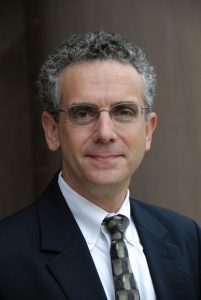
[…] Click Here to Read: Preserving German-Jewish Culture by Joanne Intrator on her website on October 13, 2016. […]